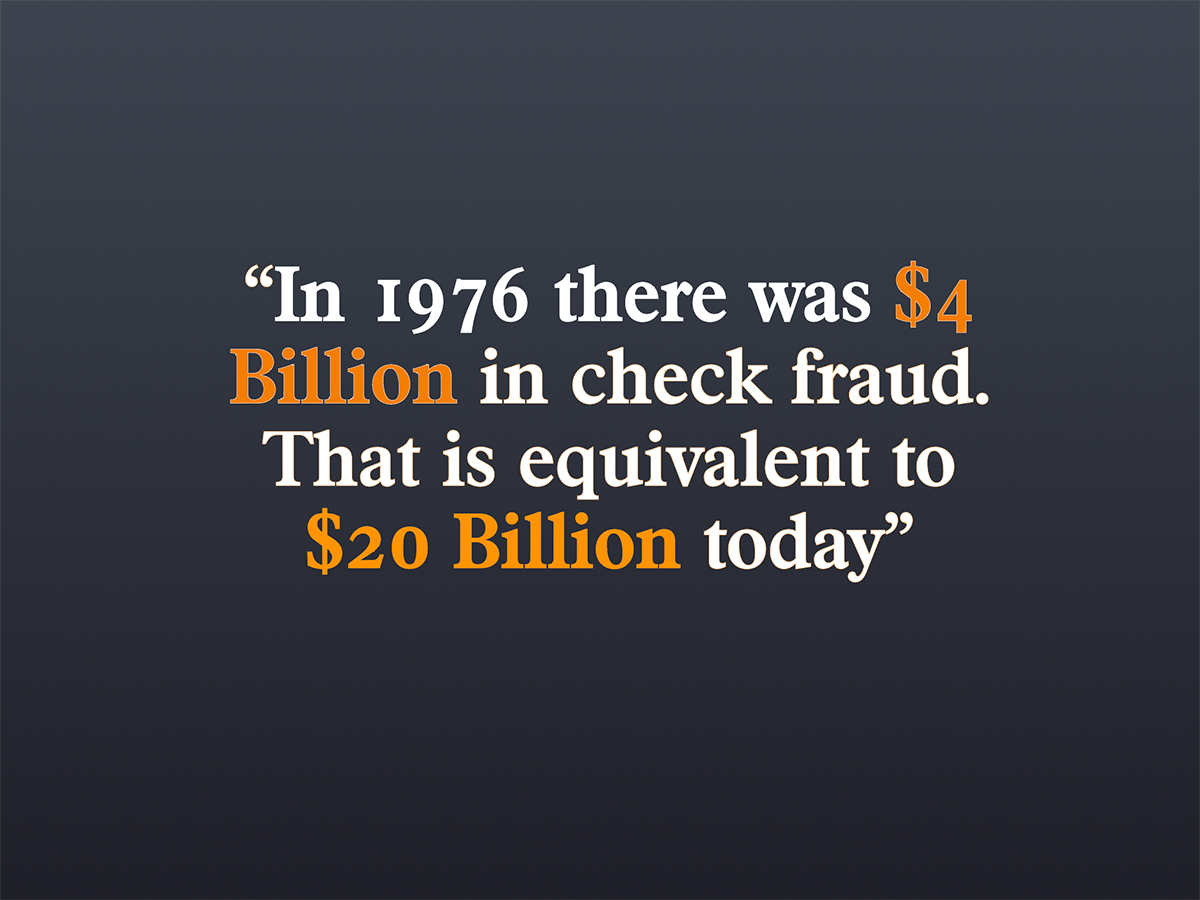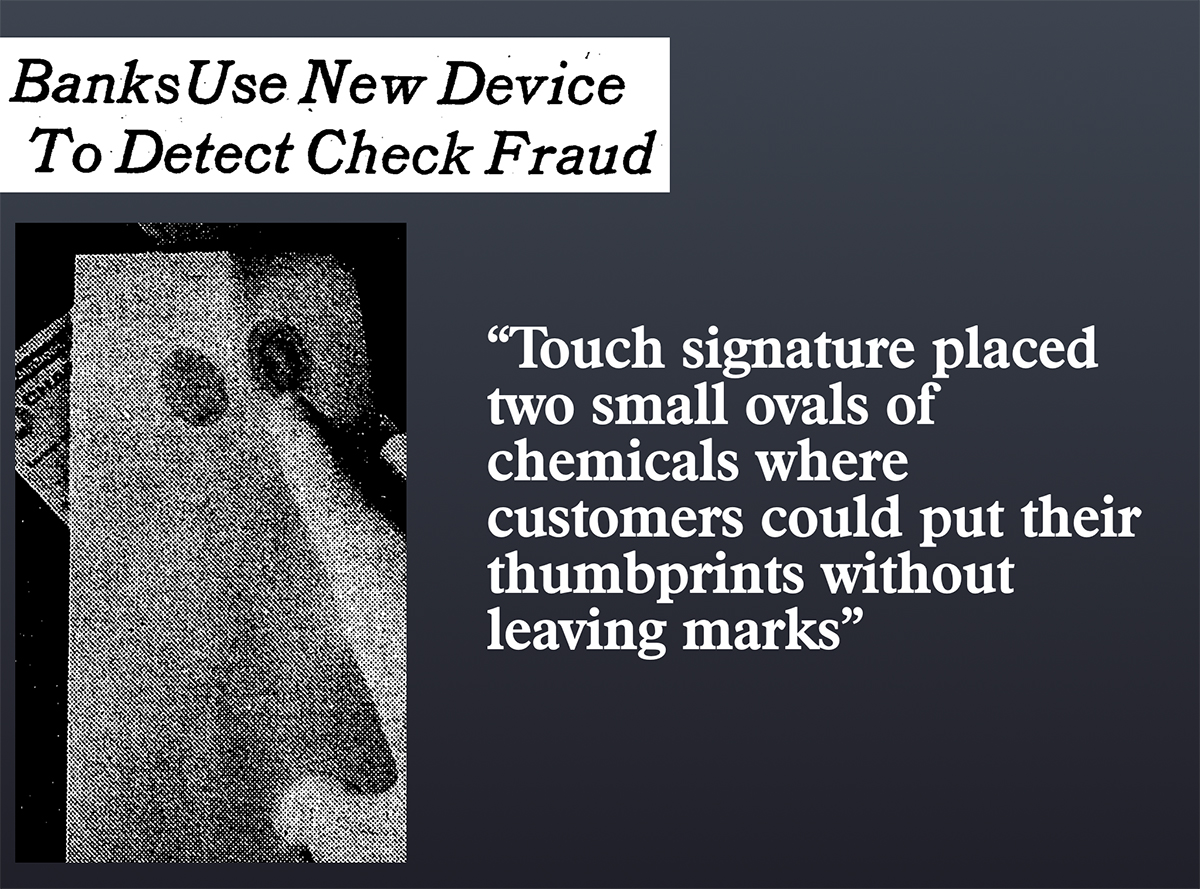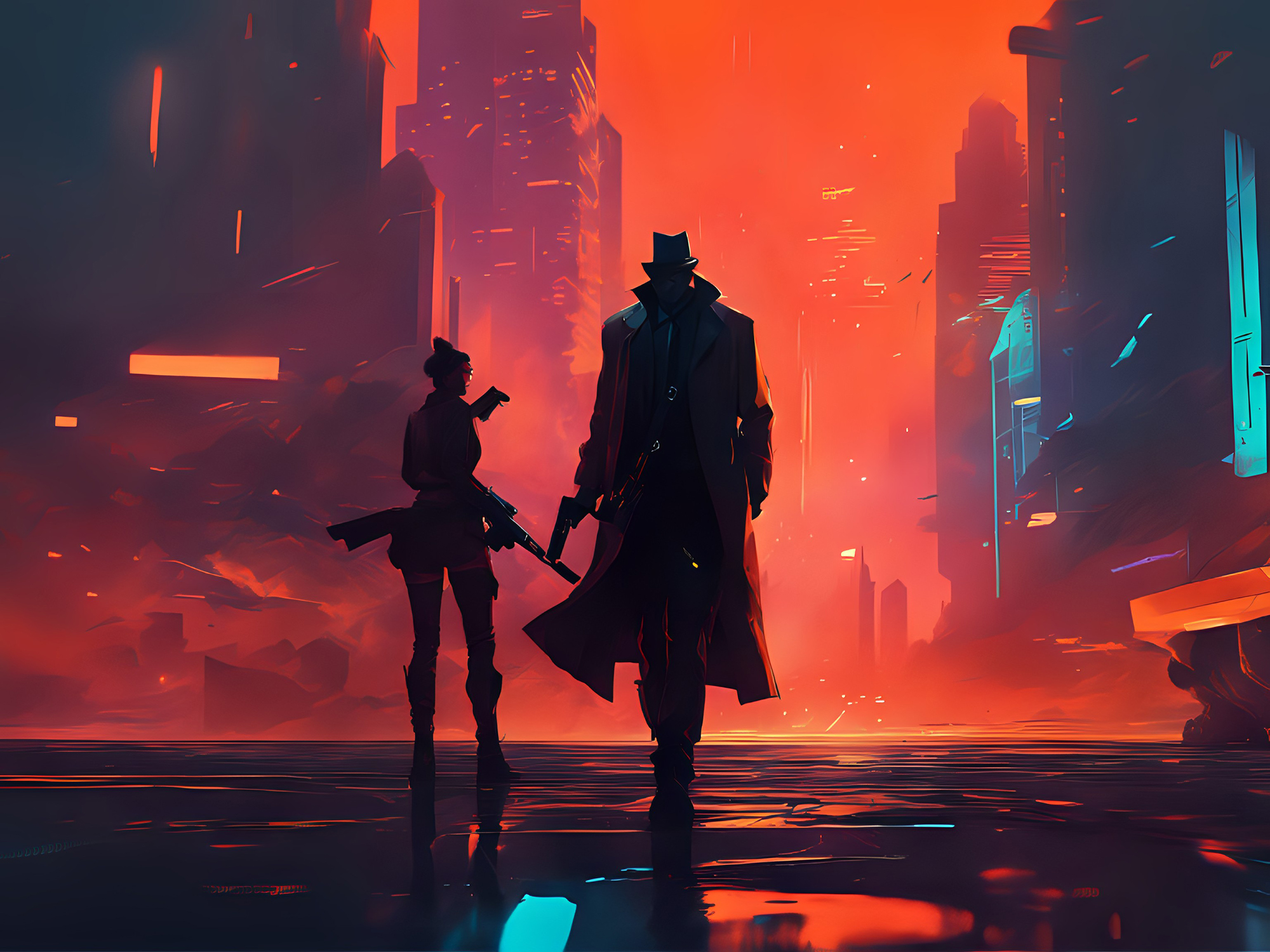You know how they say that fraud history repeats itself? Well, maybe no one says it. But I do.
And I came across a prime example this weekend while investigating check fraud over the years.
Hard Times In Fraud During The Seventies
The 1970s were hard times in fraud. The US was going through an economic recession, and inflation was raging.
And many people resorted to fraud. Banks reported an explosion of fraud in the mid-70s as more people turned to fraud to get by.

The FBI was getting crushed with a welter of new waves of white-collar crime that was defying gravity. They were hitting record numbers of criminal white-collar crime cases, including check fraud.

By 1976, Check Fraud had hit $4 billion in the United States. If you think about it, it dwarfed every other type of fraud that might be occurring at the time.
In today’s dollars, that $4 billion would equal over $20 billion. Not far from what banks are losing today.

In New York, Banks Turned To New Technology To Stop It
By July of 1977, banks had started to figure out new and clever ways to stop fraudsters, and a new technology was released.
The New York Times reported on it. And while it probably wouldn’t be much of a silver bullet today, it apparently worked at the time.
Touch Signature Device Acted As An Effective Deterrent
To solve fraud, banks collected thumbprints on the back of checks. But customers often balked at getting ink all over their hands so it was not widely adopted.
But then, someone created something revolutionary.
Called Touch Signature, the $33 device paints two small ovals of chemicals on any absorbent material, such as a check. The customer touches one, then the other oval, and leaves a clear fingerprint on the check, and to his surprise, there is no messy ink blot on his finger.

The genius of it at the time is that it was mostly psychological. But that was just enough to work at the time.
Fraud fighters thought about fraud, similar to what we do today.
“Professionals will always find a way to beat the system,” says Louis P. Buglioli, a Chase Manhattan vice president, “but the harder we make it for them …the sooner they’ll head somewhere else.”
Check Fraud Didn’t Go Away, It Kept Increasing
Unfortunately, Check fraud didn’t go away after 1977. In fact, it kept growing. Some estimate that Checks fraud peaked somewhere in the mid-1990s, with annual losses somewhere between $10 Billion and $50 billion.

During that time, many check fraud technologies were launched, which proved effective in curtailing but not eliminating the problem. That included EWS, Positive Pay, Antinori Software 16, Chex Systems, SAM, Maker Match, Vector Kite, Parascript, and many others.
Losses started to fall as check use declined for the next 15 years. In 2015, check fraud started to climb again as scammers moved to use checks for various work-from-home scams.
And now, well you know where we are at. It’s come back full circle.
The Full Article Here
Take a walk back through time and read the full article here.



